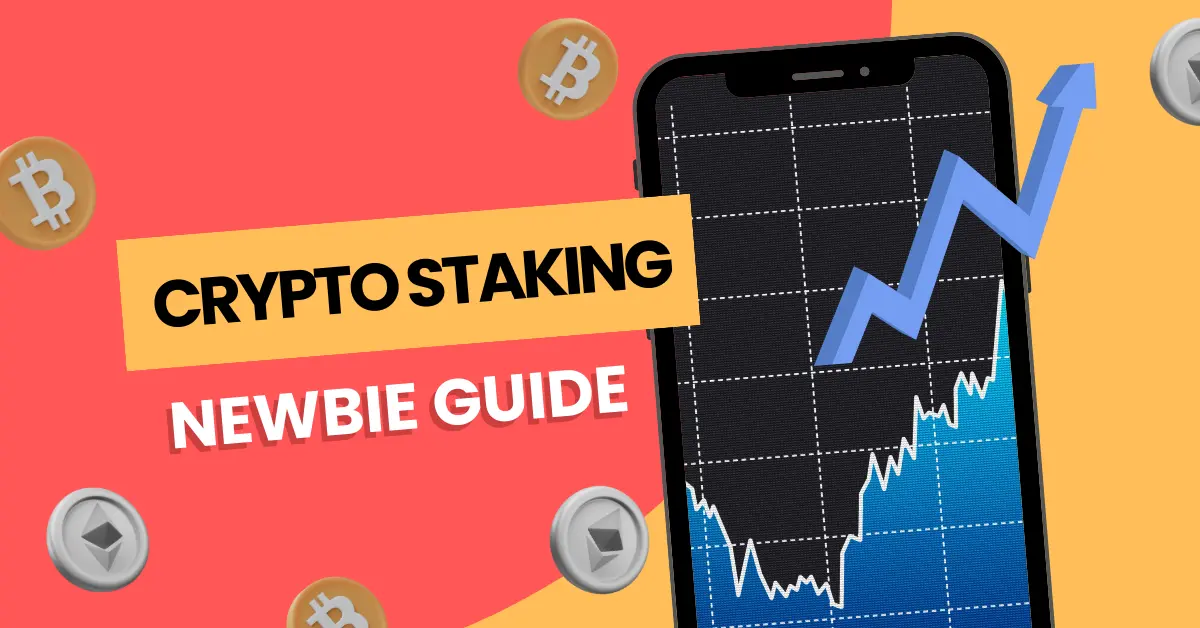Crypto Staking Newbie Guide
A short and simple cryptocurrency staking guide for the crypto beginner and newbie.

Whether or not you are new to cryptocurrency, you have likely come across the term staking and are now wanting to know what it is and how it works.
Below is a short beginner and newbie guide. I will use those terms interchangeably by the way.
What is cryptocurrency staking?
Crypto staking is a way to earn passive rewards for cryptocurrency that you hold inside of a wallet or exchange, all the while helping to secure that cryptocurrency network and assist it in reaching consensus through a mechanism called Proof of Stake (PoS).
In simple and comparative terms: think of it like earning interest on money in your savings account with the bank.
How does staking crypto work?
Staking crypto is fairly easy to do. It's designed that way, to be easy. The people designing these PoS systems want you to stake your coins and so they have to make it easy and user-friendly.
First, you buy a cryptocurrency that uses a PoS consensus mechanism and offers the option of staking. Two such cryptocurrencies are Cardano (ADA) and Solana (SOL). These are two of the more popular cryptocurrencies that offer staking.
Tip: there are many different ways for you to find a cryptocurrency that uses PoS and offers staking. You can do a simple Google search or you can use tools like StakingRewards.com which displays a list of the top crypto staking assets.
Next, you download the associated wallet or third-party wallet for that particular cryptocurrency, follow the steps provided to set it up and get it running. You will want to bring the cryptocurrency that you purchased or obtained previously into this wallet address to be able to stake it.
Finally, there will be a 2 or 3-step process whereby you will tell the wallet how much of that cryptocurrency you want to stake, and it will ask you to 'delegate' that amount to something called a validator, lastly, you will be asked to confirm and input your password.
This process varies from crypto to crypto and depends on whether you decide to stake your crypto with the project's wallet, a third-party wallet, or an exchange.
Note: the reason I have not added pictures or videos to this guide is that it is a generic guide for newbies. If I showed you how to do this using Cardano examples it might throw other people off that are wanting to stake Solana.
How do you make money off staking?
PoS cryptocurrency networks are secured and achieve consensus through the act of staking. If there is no one willing to stake their crypto, the network will not achieve consensus (agreement), the network will not be secured properly, and the network is, therefore, vulnerable to attack and failure.
To overcome this, cryptocurrency projects offer an incentive to anyone willing to stake their coins by way of a reward.
This reward is how you make money through crypto staking. The reward is most often more of the same token.
The rewards are usually distributed with a fixed or variable percentage that can be calculated as Annual Percentage Yield (APY).
The coins that you delegate go into a lottery pool along with a bunch of other people's tokens, and whenever the computer network selects one of the tokens in your pool, your whole pool is rewarded with more tokens as a reward.
Note: the reason for many people 'pooling' their tokens is so that there is a greater chance and higher likelihood of the pool being selected and in turn rewarded. Think of it like by lottery or raffle tickets, the more tickets you have the more chances you have of winning.
In this way, the cryptocurrency network can fairly distribute new tokens, achieve consensus and secure its network. This is a win/win for all involved.
What are the risks of staking?
There are a few risks with crypto staking.
The top 3 risks are as follows:
- Lock-up periods: most cryptocurrency projects that offer staking usually have a 'lock-up' period. This means that you need to stake your crypto for a fixed period of time for you to earn rewards. The lock-up period varies from project to project and can be anywhere from a few days, all the way up to 30 days or more. While your crypto is locked-up you cannot access it and so if you wanted to access your crypto to sell it, you would not be able to do that.
- The market: If you are earning 5% annually on your staked crypto but that particular currency falls 30% in price, you may have accumulated more of said currency, but it may be worth less at the end of the day.
- Rewards payout schedule: This is similar to the lock-up period. Cryptocurrency wallets and exchanges that pay rewards have a reward payout schedule. This again varies from project to project and wallet to wallet and can be as long as 30 days or more.
When should someone consider staking?
You should consider staking if you are looking to make a financial return or earn more tokens, are wanting to support a cryptocurrency project, and are OK with the risks involved.
Staking works well for holders of crypto whose investment strategy is to simply buy and hold for the long term.
An offshoot of this 'buy and hold' method is referred to as Dollar Cost Average (DCA). This is where the holder or investor will regularly, once per month, for example, buy a certain amount of that particular cryptocurrency and hold onto it for the long term with the idea that their dollar-cost investment amount will average out over time and reduce the chances of only buying when the price is high.
The DCA method combined with staking could be a good model to consider for the beginner or newbie alike.
Want to know how you can support Crypto Fireside?
Sign up below. It's free and easy 🔥.

